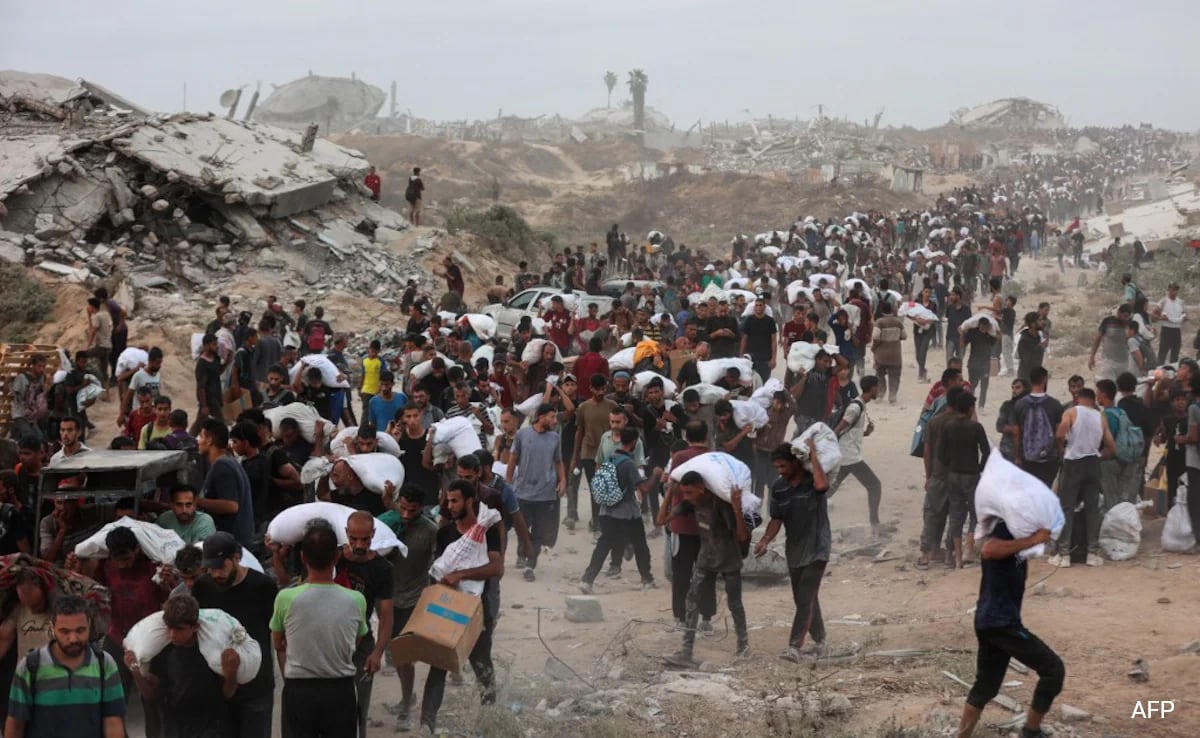 |
|
The situation in Gaza has deteriorated to a catastrophic level, with a famine-like crisis gripping the region. The Integrated Food Security Phase Classification (IPC), a UN-backed food security group, has issued a stark warning, painting a grim picture of widespread starvation, malnutrition, and disease. The IPC report highlights that food and essential services have “plummeted to unprecedented levels,” pushing the enclave into what they describe as the “worst-case scenario of famine.” This is not merely a food shortage; it is a complete breakdown of the systems necessary for survival, leaving hundreds of thousands of Palestinians teetering on the brink of death. The report, based on mounting data and on-the-ground observations, points to a horrifying increase in hunger-related deaths, particularly among children. Clean water is scarce, basic health services are collapsing, and the infrastructure necessary to sustain life has been decimated by the ongoing conflict. The scale of the suffering is almost unimaginable, a human tragedy unfolding in real-time. Ross Smith, the UN World Food Programme (WFP) director of emergencies, described the situation as “a disaster unfolding in front of our eyes, in front of our television screens,” emphasizing that this is “unlike anything we have seen in this century.” His words underscore the gravity of the situation and the urgent need for immediate and comprehensive action. The crisis in Gaza is not a sudden occurrence, but rather the culmination of a long period of escalating tensions and conflict. Since the beginning of Israel's war on October 7, 2023, the situation has steadily worsened, culminating in the current state of near-famine. According to Gaza's Health Ministry, close to 60,000 Palestinians have been killed. More than 470,000 people in Gaza, including 71,000 children under five, are now living in starvation conditions, according to recent UN estimates. These numbers paint a picture of a population facing unimaginable hardship. The full blockade imposed by Israel since March 2 has exacerbated the crisis, virtually cutting off access to food, medicine, fuel, and humanitarian supplies. This has not only crippled the ability of aid organizations to deliver essential assistance, but has also left the civilian population vulnerable to starvation and disease. The blockade is a major contributing factor to the widespread famine and has drawn condemnation from international organizations and humanitarian groups. The situation is further complicated by the dangers faced by civilians attempting to access food distribution points. Reports indicate that over 1,060 people have been killed while trying to reach these locations, highlighting the desperate conditions and the risks people are willing to take to obtain basic sustenance. The lack of security and the chaotic nature of the distribution process have created a deadly environment, where people are forced to risk their lives simply to feed themselves and their families. This underscores the urgent need for a secure and well-organized system for delivering humanitarian aid. In a significant development, US President Donald Trump has acknowledged the dire situation in Gaza, contradicting Israeli Prime Minister Benjamin Netanyahu's claim that no starvation exists. Trump's statement, made while speaking to reporters in Scotland, emphasized the reality of the situation: “That's real starvation stuff. I see it, and you can't fake that. So, we're going to be even more involved.” He announced plans for the US to set up “food centres” in Gaza, a move that could potentially provide much-needed relief to the affected population. However, the effectiveness of these food centers will depend on their location, accessibility, and the security measures in place to protect civilians. In response to international pressure, Israel has announced a pause in military operations in parts of Gaza for 10 hours daily to allow aid convoys safe passage. However, the UN has stated that this is not enough, emphasizing that 500-600 trucks are needed each day to meet humanitarian needs, while only around 100 trucks have entered since the policy change. This highlights the significant gap between the amount of aid needed and the amount that is actually being delivered. The World Food Programme has also reported that it is only able to send in about half the daily target and has not yet reopened the lifeline bakeries and community kitchens that shut down in May due to shortages. The effectiveness of humanitarian aid is further hampered by the lack of essential resources needed to prepare food. While over 96 million meal kits have been distributed by the US- and Israeli-backed Gaza Humanitarian Foundation (GHF) since late May, the IPC warns that most contents like rice, pasta and beans require cooking, but clean water and fuel are scarce. This highlights the need for a more comprehensive approach to aid delivery, ensuring that people have not only the food itself, but also the resources necessary to prepare it. The situation in Gaza demands urgent and concerted action from the international community. The IPC has called for “immediate action” to end the fighting and allow large-scale humanitarian aid. This includes not only providing food and medical supplies, but also ensuring the safety and security of humanitarian workers and civilians. The international community must also address the root causes of the conflict and work towards a lasting solution that guarantees the rights and dignity of all Palestinians. The situation in Gaza is a moral imperative. We cannot stand by and watch as hundreds of thousands of people suffer and die from starvation and disease. The time for action is now.
Source: "Apocalypse": Gaza Faces Famine-Like Crisis Because Of Acute Food Shortage
